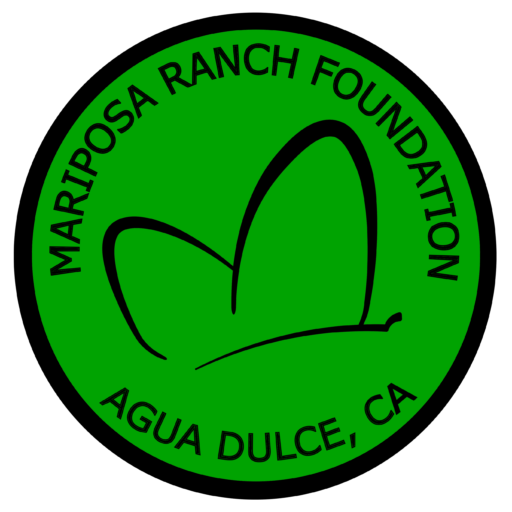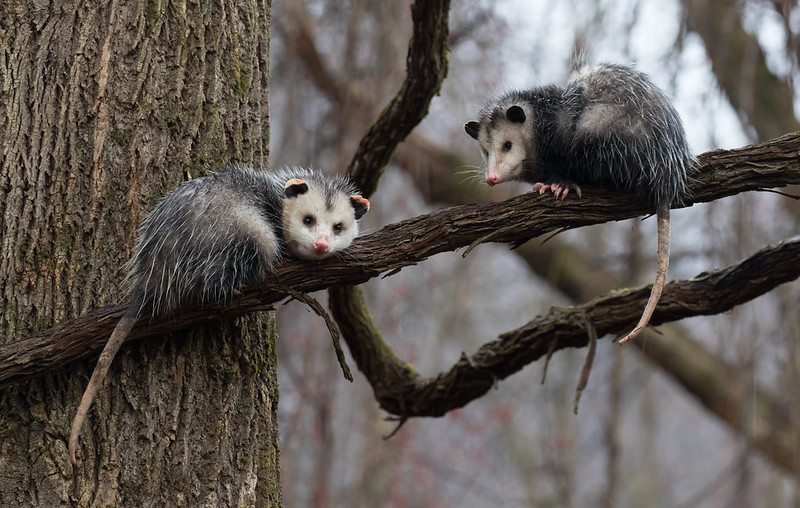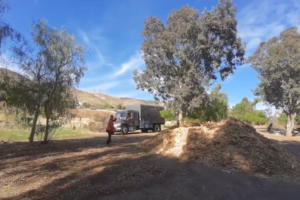“To some, the Virginia opossum resembles a rat, but it is actually a marsupial, related to kangaroos and koalas. Its infants nurse and grow in their mother’s pouch and, when old enough, they ride on her back until they are weaned and independent.“
https://www.nationalgeographic.org/media/photo-ark-virginia-opossum/

The Virginia opossum (Didelphis virginiana) looks a little odd. It has 50 teeth (more than any other North American land mammal); a scaly, almost hairless prehensile tail; and five toes with sharp claws on its feet, except for the thumb-like opposable toes on the hind feet.
To some, the Virginia opossum resembles a rat, but it is actually a marsupial, related to kangaroos and koalas. Its infants nurse and grow in their mother’s pouch and, when old enough, they ride on her back until they are weaned and independent.
The only marsupial in North America, the Virginia opossum is widespread and common. It lives throughout most of the United States and in portions of Canada and Mexico.
Wherever it resides, it’s a true benefit to the area. Like nature’s sanitation department, the Virginia opossum helps keep in check harmful rodents that can carry diseases. They also keep unwanted garden pests under control. That’s because opossums eat almost anything. They like mice and rats plus all types of insects, including cockroaches, crickets, and beetles. They love snails, too, and commonly prey on snakes—even venomous ones.
Opossums are not too picky about where they live, either. They prefer woodlands and thickets near streams and swamps, but they will make their home in cities and suburbs, as long as water is nearby.
Able to move around in trees or on the ground, they make their dens in anything from hollow logs and tree cavities to abandoned buildings. Although, they seem to prefer denning in holes in the ground dug by woodchucks or other animals.
The biggest threat to Virginia opossums is getting struck by a car, which is how most opossums die. In some areas, they are also hunted or trapped for food and fur. Even so, their population appears to be expanding and their status is listed as being of least concern by the International Union for Conservation of Nature (IUCN).
Interesting videos:
Other resources:
- Encyclopedia of Life: Didelphis virginiana
- https://www.nationalgeographic.org/media/photo-ark-virginia-opossum/
- https://www.britannica.com/animal/Virginia-opossum
- Smithsonian National Museum of Natural History: North American Mammals: Virginia Opossum
- Opossum Society of the United States
From Britannica: https://www.britannica.com/animal/Virginia-opossum
Virginia opossum, (Didelphis virginiana), the only marsupial (family Didelphidae, subfamily Didelphinae) found north of Mexico. The Virginia opossum occurs from southern Canada to northern Costa Rica. Populations in western Canada and along the Pacific coast south to northern Baja California, Mexico, originated as introductions from the eastern United States. The Virginia opossum (Didelphis virginiana) and the common opossum (D. marsupialis) can be found together in eastern and southern Mexico and in Central America.
Male Virginia opossums may grow to 100 cm (40 inches) but average about 76 cm (30 inches) in total length (including the tail); females average about 72 cm (28 inches). The size of a house cat, males average about 3kg (6.6 pounds), females about 2 kg (4.4 pounds). The Virginia opossum is the only member of the genus that stores body fat, and older males may exceed 6 kg (13.2 pounds) in the fall of the year. Virginia opossums have a long head and pointed snout, rounded naked ears, and a scaly, nearly hairless, prehensile tail that is about half of their total length. Their fore and hind feet have five toes, all with sharp claws except for the clawless, thumblike, opposable innermost toe on the hind feet. The Virginia opossum, like all members of the family Didelphidae, has 50 teeth, and the last premolar is the only tooth that is replaced (that is, preceded by a milk tooth) in the adult.
Scientific articles:
From a neighborhood app:
A neighbor posted this and with her permission we want to share this with you:
Please be kind to Opossums. A kind reminder.. I know it’s a lot to ask but please do it if you can, keep some disposable gloves in your car. If you see a opossum that’s been hit by a car or something, please move the body out of the roadway and when you do, check to see if it is a female with babies still in its pouch. It’s not as gross as it sounds other than handling a dead possum. Please dont let her babies die with her. Today Granite City animal control, these guys are awesome, they were clearing a board stiff dead possum out of the road, they checked for a pouch, it had one so its female, they checked for babies and found 9 living babies in there. They immediately brought them to a rescue and I they got them to Treehouse and happy to say they appear healthy and should survive. Opossums are so good to have around, I know to some its gross, but please help them if in need.
Agua Dulce, CA neighbor




